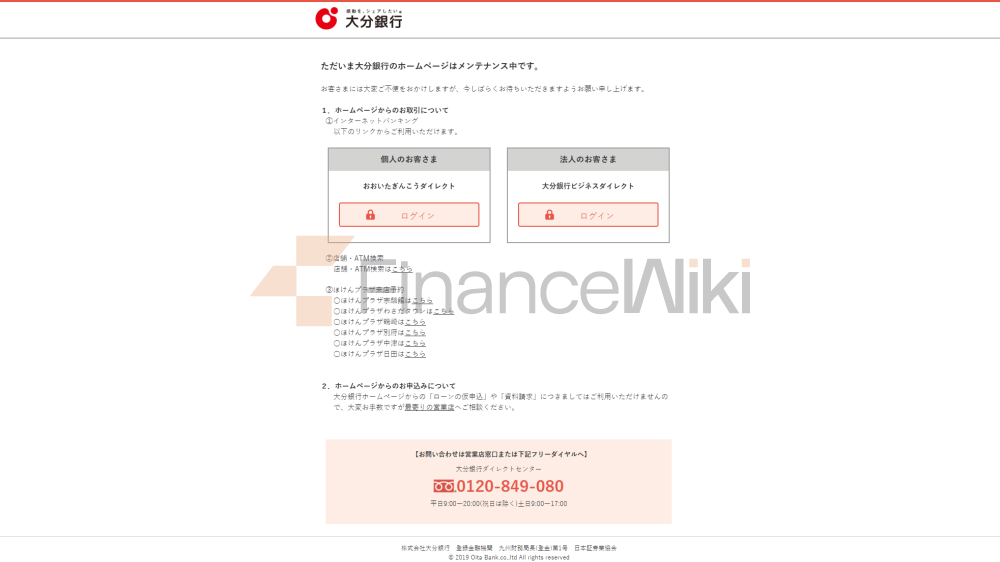Basic information
of banksOita Bank (Oita Bank) is a regional commercial bank headquartered in Oita Prefecture, Japan, founded in 1943 and mainly serving the Kyushu region. The bank is controlled by local corporate and individual shareholders and is an unlisted local financial institution. Its business is concentrated in Oita Prefecture and surrounding areas, with offline outlets covering major cities in Kyushu, and its ATM network is interconnected with other regional banking alliances in Japan, making it easy for customers to use it across regions.
Regulation &
ComplianceOita Bank is regulated by the Financial Services Agency (FSA) of Japan and the Bank of Japan, and strictly adheres to domestic financial regulations. As a member of the Japan Deposit Insurance Corporation (DICJ), its deposits are protected by a deposit insurance scheme with a maximum payout limit of 10 million yen (including interest) per customer. In recent years, there has been no public record of major compliance penalties, and the risk management and control system is relatively stable.
Financial HealthAs
of the latest financial report, Oita Bank's capital adequacy ratio has remained above 12% (higher than Japan's regulatory requirements), the non-performing loan ratio has been controlled at around 1.2%, and the liquidity coverage ratio has exceeded 120%, showing strong resilience. The proportion of local loans is high, but the asset quality is stable.
Deposits and loan products
: the interest rate of demand deposits is close to zero, and the annualized interest rate of time deposits (1 year) is about 0.02%; High-yield products such as "Super Regular" are available (up to 0.1%). Features include a Tax-Free Savings Account (NISA) and a Pension Savings Plan.
Loans: Housing loan interest rate fluctuates from 0.3%-0.8%, car loan interest rate starts from 1.5%, and local income certificate is required for personal credit loans. Support early repayment without liquidated damages.
List of common
expensesAccount management fee: No monthly fee for ordinary accounts (minimum balance of 10,000 yen is required); 440 yen per domestic transfer, starting from 2,000 yen for cross-border telecommunications; ATM interbank withdrawal fee is 110 yen per transaction (additional fee at night). Note: Some preferential accounts need to be bound to pay wages on behalf of others.
The digital service experience
mobile app score is 3.8/5 (Google Play), which supports face login, real-time transfer, and utility bill payment. Technical highlights include a partnership with LINE to push billing reminders, but AI customer service is only available in Japanese. APIs are not open.
Customer service quality
provides telephone support in Japanese (9:00-17:00 on weekdays), and online complaint processing takes an average of 3 working days. There is no multilingual service, and international customers need to communicate through an agent.
Safety and Security Measures
: DICJ Deposit Insurance Coverage; Real-time monitoring of abnormal transactions. Data security: Passed the Japanese JIS Q 27001 certification (equivalent to ISO 27001), and there was a phishing attack in 2021 (no data leakage).
Featured services and differentiation
focus on localization: the launch of the "Oita Specialty Merchant Co-branded Card" to promote the local economy; Provide low-interest agricultural equipment loans to farmers. There is no private banking department, and high-net-worth clients are referred to partner brokers.
Ranked
in the middle of the ranks among Japanese regional banks in terms of market position and accolades (assets of about 3 trillion yen), it was awarded the title of "Best SME Support Bank" in Kyushu in 2023, and its digital service innovation lags behind that of metropolitan banks.
















